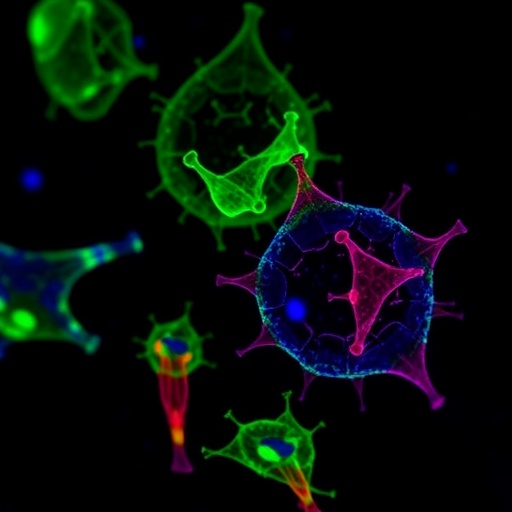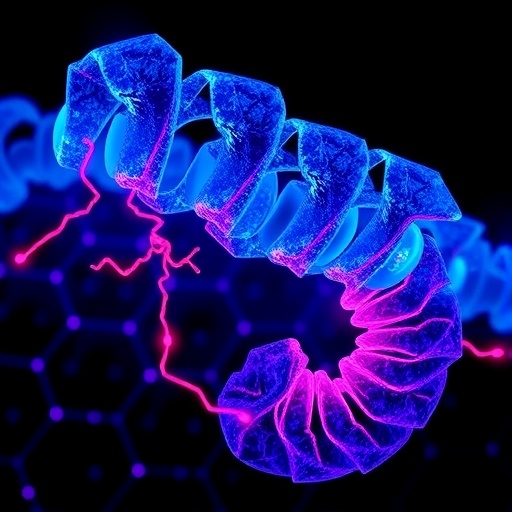In a remarkable advance that could reshape the understanding of viral infections in human tissue, a recent study has uncovered the pivotal role of lactoferricin in enabling adenovirus infection of human skeletal muscle cells. The findings published in npj Viruses detail an innovative exploration that bridges immunology, virology, and muscle physiology, suggesting new avenues for therapeutic intervention and gene delivery technologies.
Adenoviruses are well-known vectors used in gene therapy and vaccine development, exploiting their natural ability to infiltrate host cells and deliver genetic material. However, their infectivity is typically limited by the availability of specific receptors and the cellular environment. Human skeletal muscle cells, despite being targets for various muscular diseases and therapies, have displayed relative resistance to adenoviral infection, thereby constraining research and clinical applications.
The multidisciplinary team led by Danskog, Mistry, and Årdahl has identified lactoferricin—a peptide derivative of the widely studied milk protein lactoferrin—as a critical facilitator that surmounts this natural barrier. Lactoferricin appears to act as a molecular key, enabling adenovirus particles to breach the defenses of muscle cells and establish infection. This discovery not only unravels a fundamental aspect of viral-host interaction but also offers practical implications for improving adenovirus-based vectors.
.adsslot_49ebWyFQZG{ width:728px !important; height:90px !important; }
@media (max-width:1199px) { .adsslot_49ebWyFQZG{ width:468px !important; height:60px !important; } }
@media (max-width:767px) { .adsslot_49ebWyFQZG{ width:320px !important; height:50px !important; } }
ADVERTISEMENT
Lactoferrin and its peptides have long been noted for their antimicrobial and immunomodulatory properties, frequently marking them as potential therapeutic agents against a spectrum of pathogens. The capacity of lactoferricin to enable viral entry contrasts with its traditionally protective role, revealing a nuanced interplay where host peptides may be co-opted by viruses to favor infection under certain circumstances.
In detailed mechanistic studies, the authors demonstrated that the presence of lactoferricin enhances adenovirus attachment and internalization into skeletal muscle cells. This suggests that the peptide may alter the cell surface properties or engage with viral capsid proteins to increase binding affinity. Such molecular synergy could redefine how vectors are designed to maximize efficacy while minimizing off-target effects.
The research further showed that lactoferricin does not simply enhance virus binding but also influences downstream steps critical to successful infection, including endosomal escape and nuclear entry of the viral genome. The exact pathways remain an area of ongoing investigation but may involve modulation of cellular signaling cascades or membrane dynamics by lactoferricin.
This discovery has immediate translational potential. For gene therapy targeting muscular dystrophies or other skeletal muscle disorders, improving adenovirus infectivity is a crucial hurdle. Incorporating lactoferricin into delivery protocols could increase therapeutic gene uptake, resulting in enhanced expression and better clinical outcomes.
Moreover, insights from this work could inform vaccine development where targeting muscle tissue is desirable. Vaccines that rely on adenoviral vectors might benefit from co-administration or engineering to exploit lactoferricin’s facilitating effects, improving immunogenicity and broadening the vaccine’s reach.
Importantly, this research also invokes questions about viral pathogenicity and host vulnerability. If natural or induced levels of lactoferricin alter susceptibility to viral infections, it necessitates a re-examination of host defense mechanisms and the factors influencing viral tropism in muscle tissues.
The study employed sophisticated in vitro models of human skeletal muscle cells, combined with viral infectivity assays and molecular biology techniques enabling fine-grained interrogation of virus-host interactions. Fluorescence microscopy, flow cytometry, and quantitative PCR analyses were central in confirming the enhanced infection rates mediated by lactoferricin.
Further experiments involving peptide competition and mutational analyses of the adenovirus capsid protein identified key interaction domains. This suggests that both viral and host components are finely tuned to enable this unexpected viral entry route, highlighting potential targets for antiviral drug development.
The implications extend beyond adenoviruses, prompting investigation into whether lactoferricin similarly influences other viral families or pathogens. Given its broad antimicrobial spectrum, this dual role might reflect a complex evolutionary balance between host defense and pathogen exploitation.
Additionally, understanding such peptide-mediated viral entry mechanisms could pave the way for synthetic biology approaches to design novel viral vectors with enhanced tissue specificity and reduced immunogenicity. This precision engineering is vital for the next generation of gene therapies.
As a final note, these findings challenge the simplicity of viewing host peptides as exclusively defensive molecules. The dualistic roles underscore the dynamic ecological niche represented by the human body, where physiological molecules serve multiple, sometimes conflicting, roles depending on the context.
This research marks a significant milestone in viral biology and therapeutic science, opening new horizons for not only treating muscle disorders but also enhancing vaccine strategies and viral vector design. As further studies elucidate the extensive roles of lactoferricin, the scientific and medical communities stand to benefit from this refined understanding of viral pathogenesis and host interactions.
Subject of Research: Lactoferricin’s role in enabling adenovirus infection of human skeletal muscle cells
Article Title: Lactoferricin enables adenovirus infection of human skeletal muscle cells
Article References:
Danskog, K., Mistry, N., Årdahl, C. et al. Lactoferricin enables adenovirus infection of human skeletal muscle cells. npj Viruses 3, 62 (2025). https://doi.org/10.1038/s44298-025-00144-7
Image Credits: AI Generated
Tags: adenovirus gene therapy applicationsenhancing adenoviral vector infectivityhuman skeletal muscle cells and virologyimmunology and muscle physiology intersectionimplications for vaccine developmentinnovative gene delivery technologieslactoferricin role in adenovirus infectionlactoferrin peptide derivativesmultidisciplinary research in virologyovercoming muscle cell resistance to virusestherapeutic interventions for muscular diseasesviral-host interactions in human tissues





